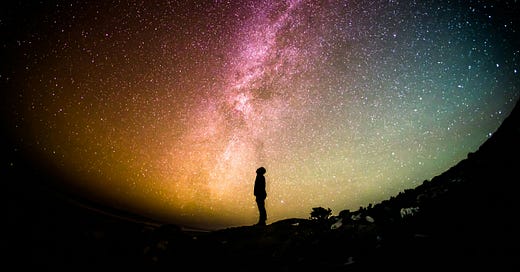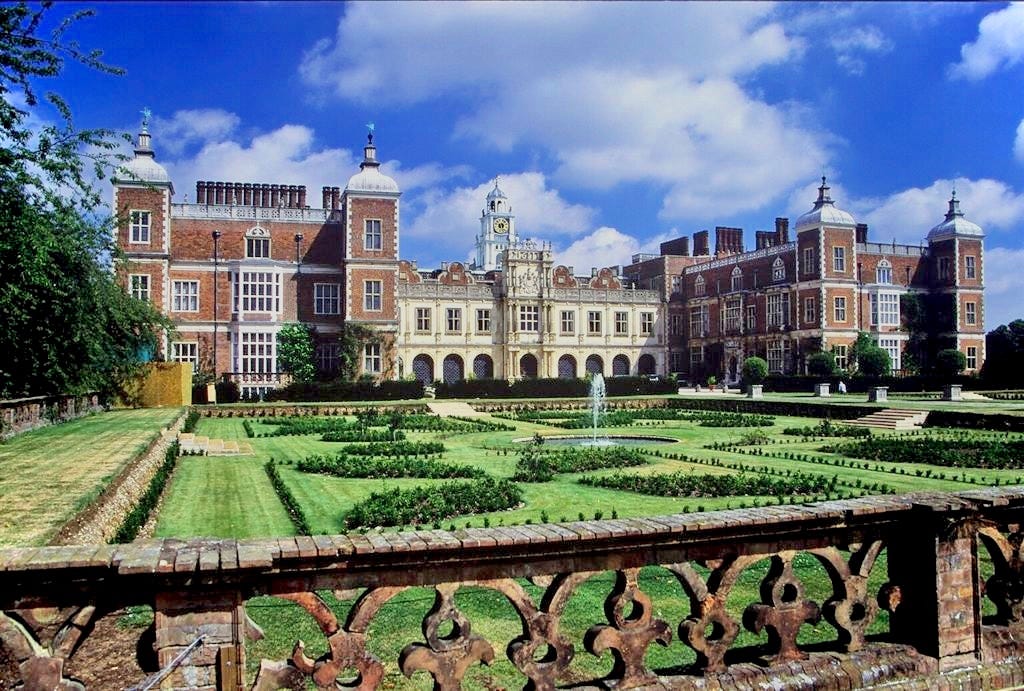I love the words “awe and wonder!” They have a bit of surprise in them, wrapped with a deep sense of delight. Or maybe more than delight, it’s a whole body sensation of gratitude.
No matter how we describe it, it’s good for us! Awe and wonder improve our daily lives and provides us with wondrous distractions! Research into the mental health benefits of experiencing awe and wonder include stress relief, mental reset, feelings of joy and gratitude, and a boost to our emotional resilience.
It can also quiet our overthinking and rumination, and encourages creative thoughts and new learning. From the big picture perspective, awe and wonder provide us with feelings of connection: connection to the person we’re standing next to reveling in the same experience, or it might connect us to a feeling of vastness - that we’re not alone, there’s more than just us by ourselves.
One study about awe, undertaken at Yale University, discovered that, “People who made a habit of noticing everyday sources of awe—such as the intricate pattern on a leaf, the vastness of the night sky, or even a moving story or scientific fact—reported improvements in emotional wellbeing, even without structured therapy or medication.” The participants in the study were prompted via text to pause and notice either the intricacy or the vastness of their daily surroundings. That might be in art, nature, music, or human interaction. The participants in the “awe group” had a significant reduction in their symptoms of stress and depression over the control group.
Where and how do we search for awe?
We each meander in our separate worlds, yet there are some commonalities of where we all might bump into awe and wonder.
Nature provides us with mountain vistas, starlit skies, ocean sunsets, a breaching whale, or redwood trees.
Travel presents us with new perspectives on how others live, architecture we’ve never seen before, and land formations that seem magical.
Music can transport us whether we’re playing or singing our favorite piece, or we’re mesmerized by a symphony concert.
Human stories can explode our minds as we learn about individuals who invented or accomplished extraordinary things, or who faced fear and kept going, or who looked at the usual and created the amazing.
Museums (you knew I’d go here!) and cultural experiences nudge us into awe and wonder with beauty, knowledge, stories, and history that stops us in our tracks.
Examples of where I felt awe and wonder in museums and historic sites:
Seeing Kronborg Castle in Copenhagen, which may have inspired Shakespeare’s Hamlet. My mind had to pause and weave together a story I read in high school, with the ultimate English author, with a castle I was standing in front of in Denmark!
Walking into St. Paul’s Cathedral in London. The size, the history, the architecture, the details! As a questioning Christian at the time, I told myself I would not take communion. But when I noticed the elaborate communion cup, I asked the Lord for forgiveness and walked up to the communion rail!
Stepping on the same pathways where Elizabeth I walked when she was at Hatfield House, outside of London. As an avid reader of English history and English historical fiction, I could hardly breathe realizing I was walking where Elizabeth I walked.
Riding the funicular tram up to Victoria Peak in Hong Kong. Not a museum nor exactly a historic site, but it was built in 1888, so I’ll claim it! The view at the top was spectactular but riding the tram felt like having stepped a piece of inside cultural history.
Seeing the Pietà by Michelangelo. I had seen numerous pictures of the Pietà including slides in art history classes. But standing in front of it, I reveled in the texture, the body language, the draping, the emotions, and was stunned.
Wandering through Biltmore House as curator in the evenings after the guests had left and most of the staff was gone. I would think to myself, “I’m here taking care of George Vanderbilt’s home and all of his stuff!” It felt a bit dreamlike.
No, not a museum, but being millions of years old, I’ll call it a historic site! The Grand Canyon! As I stood on the South Rim the first time, in a state of definite awe and wonder, I thought, “Why did no one tell me?” Of course, many had, but it defies words and pictures. In-person is the only way!
I’m very aware that I’ve had some amazing experiences in my life that provided me with extraordinary moments of awe and wonder. However, awe and wonder often come at unexpected, small, daily moments that have nothing to do with museums, or art, or historic sites.
Awe and wonder can’t be forced, but we can cultivate it. And, knowing that awe and wonder is beneficial to our mental wellness, we should nudge ourselves to create opportunities for awe and wonder to come our way.
Possibilities for awe and wonder come from (of course I would say this!) visiting museums. Also, from seeking out dramatic landscapes, spreading a blanket at night and admiring the stars, or attending concerts or listening to music.

But it’s not just where we are that encourages awe and wonder, it’s paying attention. It’s easy to trudge through our days with a narrow focus. We have to push ourselves to look up, to peer out, to pause and examine, and to listen. We might see a butterfly land on a dog. Or a rainbow that rises above a boat on a lake. Or we might listen to someone share a life story that touches our soul. It’s on us to search out, be aware, and notice those moments of awe and wonder.
Here’s your challenge. What will you do today to invite the possibility of awe and wonder? And what will you do everyday to encourage yourself to pause and notice tiny or grand moments of awe and wonder? It just might enhance your life!








